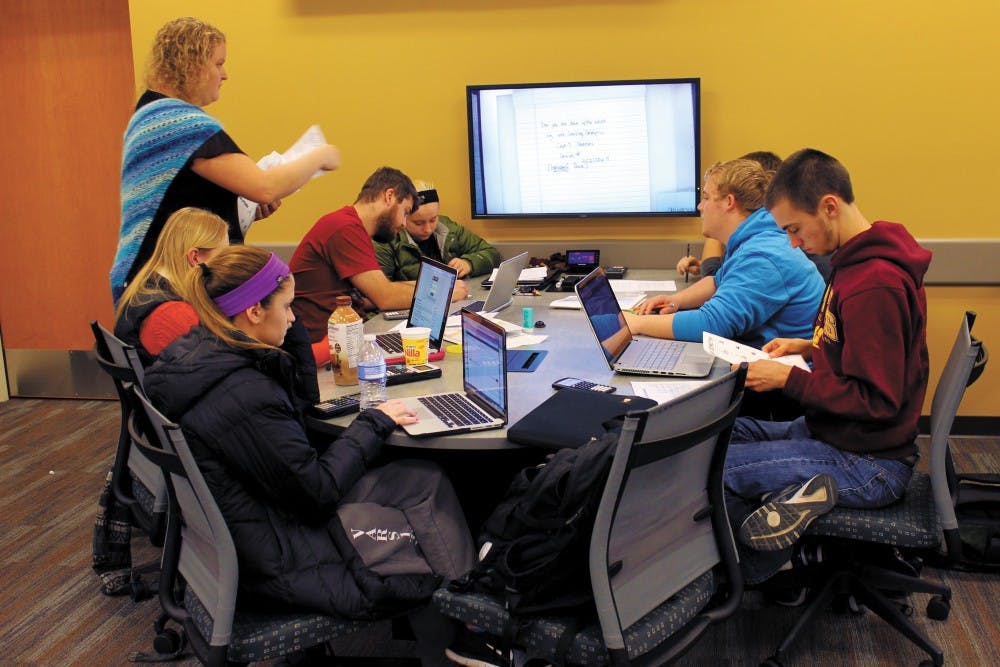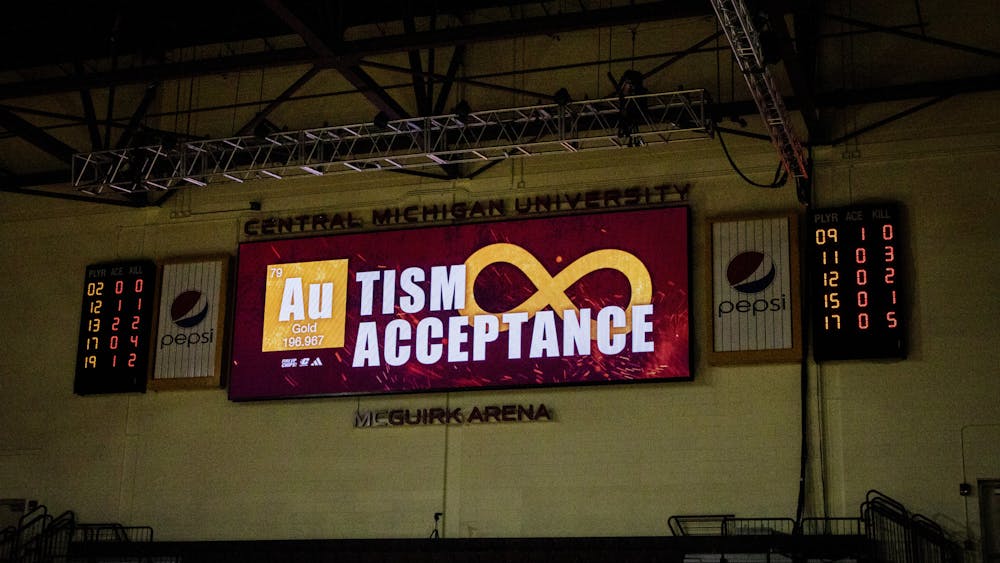More active learning classrooms coming to campus this summer

Students work together to solve problems in an active learning classroom Nov. 13 in the Dow Science Complex.
Active learning classrooms are being added to Pearce Hall this summer.
These classrooms are designed to make students collaborate on assignments and problem solving, rather than listen to lectures. The ALC approach is being used more prevalently nationwide because of consistent evidence that shows students learn more and keep the knowledge and skills they gain, as they progress through their college careers.
The preliminary assessment of courses taught in the Dow-ALC last fall, shows significant reduction in DEW rates.
DEW is the proportion of students who earn D's, E's or withdraw from the class. These rates were 20 percent lower than the five year averages.
Faculty on the College of Science and Technology Active Learning committee will conduct further assessments of student learning at the end of this semester and again next year.
Two classrooms in the Dow Science Complex were converted into active learning classrooms in 2014: 108 and 135. Courses such as chemistry, geology and physics are taught in these rooms.
"These classrooms were just added in 2014 to see how it would work out," said Associate Dean of the College of Science and Technology Jane Matty. "CMU plans to convert two classrooms in Pearce Hall into active-learning classrooms this summer, and they will be available to every department on campus, not just designated to science or English or math. The classes will be coordinated through the Registrar's office."
Each room is equipped with multiple tables and large screens so students can work in groups on specific problems. This gives professors an easier way to walk around the class and get feedback during the lesson. Some courses are offered as active learning classes and regular lectures.
"The ALC has good intentions," said Shelby Township freshman Shelby Oakes. "We sit in groups of four or five and are supposed to work together to complete problems. In lecture, it was only expected that we sit, listen and take notes. Since being in the ALC for almost a whole semester, I have worked with my group members maybe three times. It's like listening to a lecture but at a smaller table. If the ALC was utilized to it's full potential, it would correspond well with my learning style."
Since the ALC is fairly new, many professors who are used to basic lecture settings are learning how to prepare for group-oriented classrooms. In these newer classrooms, there is more problem solving in between lecturing and the set up makes it easier for professors to judge the students understanding of the content.
"There is definitely a lot of preparatory work involved in teaching these active learning classrooms," said Assistant Professor of Chemistry Janice Tomasik. "The students success depends a lot on how the teacher works with the class. My philosophy is finding a balance between the traditional way of conveying information and working in different ways for students to problem solve. When possible, I like to have students do hands-on activities."
Tomasik has noted a higher average of test scores in her active-learning classroom compared to that of a lecture. Without a deeper analysis the test scores seem higher, but the tests are also slightly different. At the end of the semester, faculty are planning to compare the American Chemical Society final exams to see if there is a difference in scores based off of the type of learning environment.
"When classrooms change, it can be hard for the students and the professors to adapt," Tomasik said. "If students exhibit higher learning skills and higher test scores, then it's definitely worth the hard work."
While there is evidence of higher scores for students in active learning classrooms, some students said they learn more efficiently in a traditional classroom set-up.
Goodrich freshman Lizzy Kippe said she does not like the way active learning classes are scheduled.
"There was no option one way or another when I was selecting my classes, so I essentially was placed in the ALC based on the day and time I chose my chemistry class," Kippe said. "I think students should be able to pick an ALC class or lecture based on their personal learning style instead of being thrown into them."




